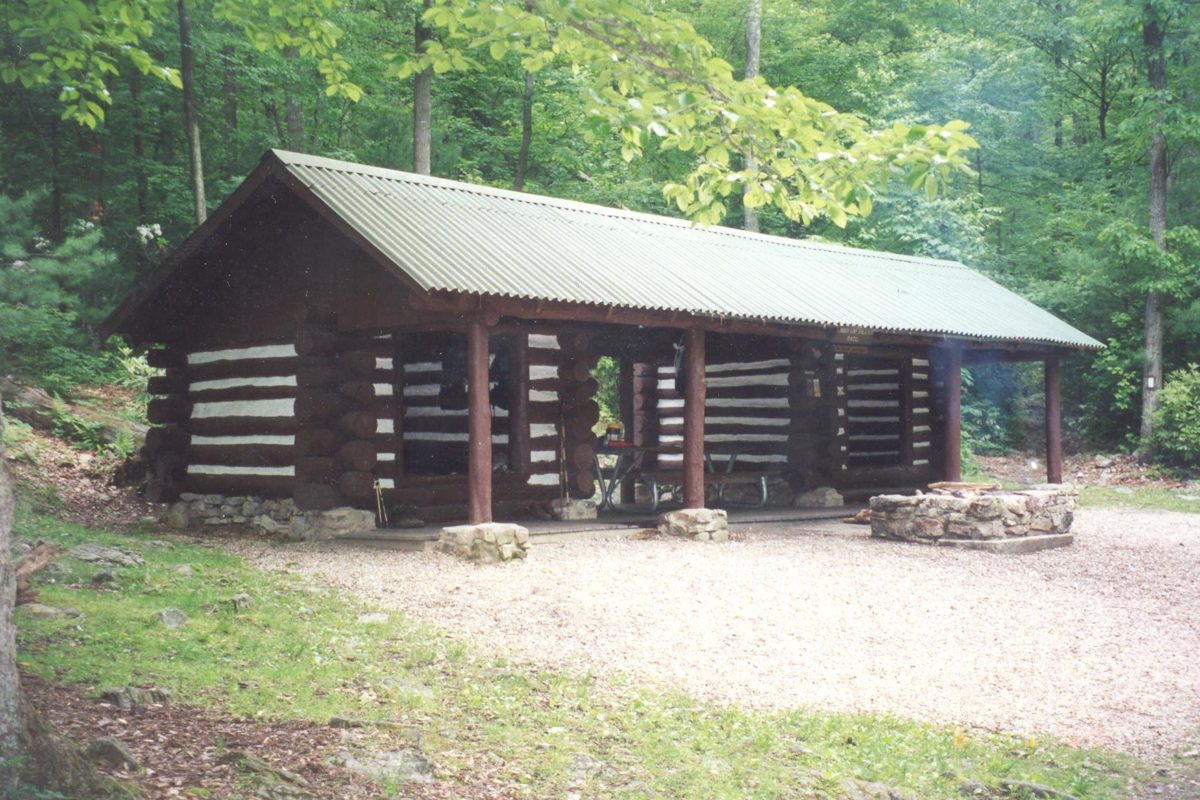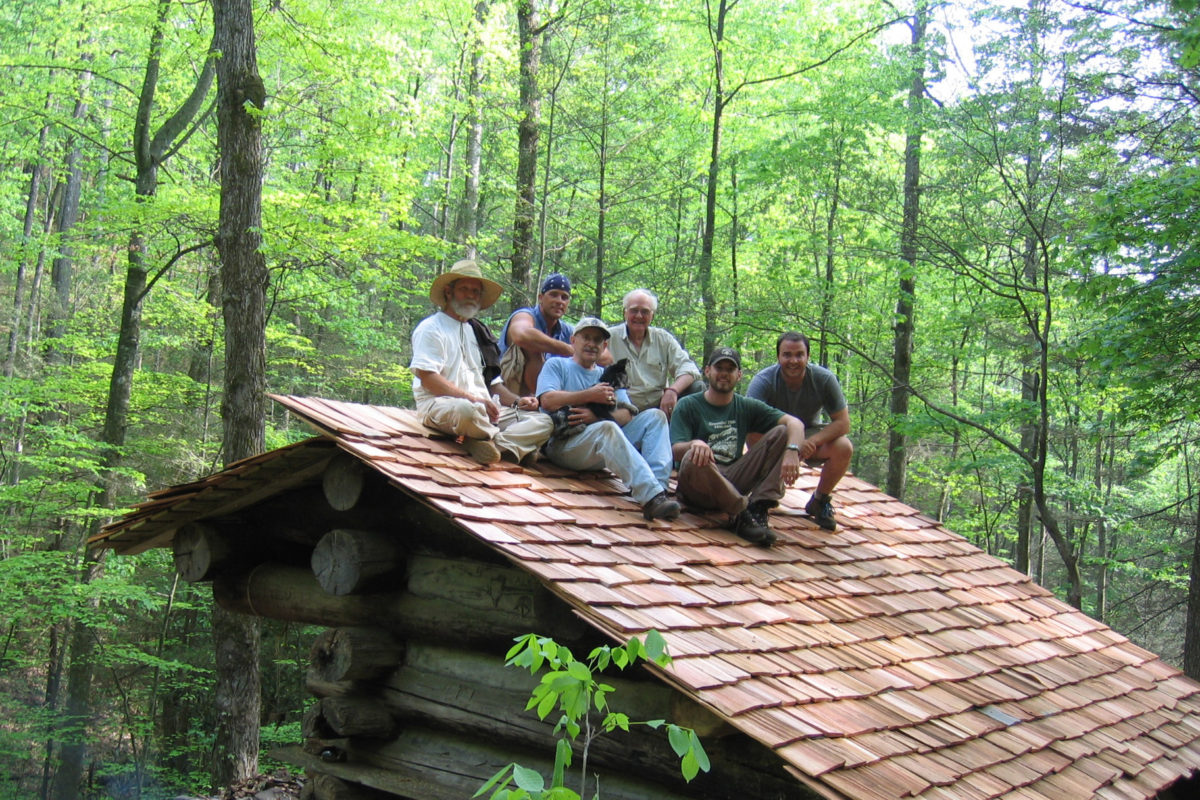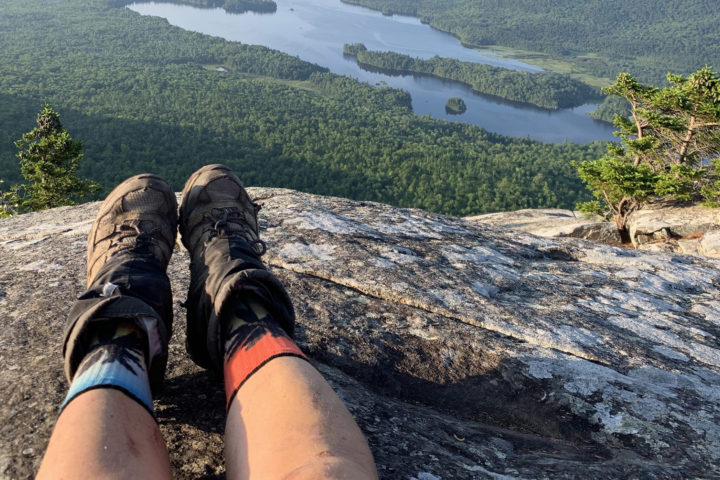Thru-Hike
Shelters
Shelter life
There are more than 250 backcountry shelters located along the Appalachian Trail (A.T.) for backpackers on a first-served basis. Not only are they the best places to stay dry, but they reduce hikers’ impact on the Trail environment.
 A typical shelter, sometimes called a “lean-to,” has an overhanging roof, a wooden floor and three walls. Most (but not all) are near a creek or spring, and many have a privy nearby.
A typical shelter, sometimes called a “lean-to,” has an overhanging roof, a wooden floor and three walls. Most (but not all) are near a creek or spring, and many have a privy nearby.
There are more than 250 backcountry shelters located along the A.T. at varying intervals. They are an average of about 8 miles apart, but can range from 5 miles to 15 miles apart, or even as much as 30 miles apart when there is a town with some sort of lodging in between. So, it’s important to plan ahead and prepare and carry a map or guidebook with you or find shelters on our interactive map.
Some shelters have food storage systems in place to protect food from bears and other animals, but the majority do not. Where these systems are in place, please use them, but even when you can confirm they are in place, it’s best to bring your own personal food storage container. For more information about bears and food storage see our page on bears.
Shelters are for all A.T. users. Hikers may occupy them on a first-come, first-served basis until the shelter is full (although there are a few exceptions, most notably in the Great Smoky Mountains National Park and Baxter State Park). Shelters are intended for individual hikers, not groups.
The use of some shelters in heavy-use areas requires a permit, registration and/or fee payment. See our Permits, Regulations, and Fees page for more information.

The Benefits of Shelters
- Shelters are the best places to stay dry in wet weather (they fill up fast when it rains).
- They are often a good place to meet and talk with other hikers.
- Most have privies and water sources nearby.
- Shelters are less hospitable to ticks than most camping areas (unless a dog is present).
- Staying at shelters reduces hiker impact on the Trail environment and is a good Leave No Trace practice. It concentrates use in a relatively small area. Meanwhile, other areas stay pristine.

The Downsides of Shelters
- They may become crowded and you cannot choose your shelter mates.
- Mice are common residents, especially where previous hikers have been careless with food.
- You may be exposed to viruses, such as coronavirus, norovirus, or colds carried by other hikers.
- A good night’s sleep may be difficult, especially if you are a light sleeper.
Shelter Etiquette
- Refrain from smoking or vaping in or near shelters and privies. Help keep the shelter environment healthy and free of second-hand smoke; pack out cigarette butts.
- Make room for other hikers. Concentrate your gear into a small space.
- Do not set up tents inside shelters. They take up too much space.
- Do not hang a hammock from any part of a shelter. Shelters are not designed to support them.
- If you have a dog, consider tenting. It’s not a requirement, just a courtesy, especially if your dog barks, growls, drools, is wet or muddy, or is overly friendly. Consider that your dog may have ticks. Keep your dog on a leash at all times, and on a short leash if you bring him or her to the shelter to meet hikers.
- If you snore, tent. Not everyone will realize they snore, so bring earplugs just in case.
- Make phone calls away from the shelter and use headphones or earbuds to enjoy music. Allow nature’s sounds to prevail and shelter visitors to converse with each other.
- Eat outside the shelter if at all possible. Spilled food can attract rodents and other animals.
- Don’t cut down trees for firewood; forego a fire if possible. Use a backpacking stove for cooking. If you must have a fire, collect sticks and downed small limbs for kindling along the trail’s edge as you approach your destination. Keep fires small to conserve wood, preserve the ecosystem, and avoid unsightly unburned logs.
- Dispose of waste liquids at least 100 feet from the shelter and 200 feet from water sources.
- If a shelter has a privy, use it. If not, dig a cathole 200′ feet from the shelter (6-8″ deep, 3-4″ deep). Bring a trowel or tent stake for this purpose.
- Don’t tag (graffiti) the shelter. Express yourself and get artistic in the shelter register.
- Do not leave or burn trash or garbage in the fire pit. Don’t leave extra food in the shelter, in any storage boxes, or hanging from trees, either.
- Keep the grounds litter-free. Carry out all your trash and leftover food.
- Sweep out the shelter when you arrive and leave as even the smallest crumbs can attract rodents.
- Be considerate of others hikers. All shelter etiquette boils down to common courtesy in a very small shared space. Visit our Leave No Trace page to learn more tips on how you can preserve the trail and its environment.

Shelter fees
In areas with the heaviest foot traffic, the use of some shelters may require the payment of a fee. This is sometimes the case when an on-site caretaker is needed to help keep the area clean, manage backcountry sanitation at composting privies, and educate hikers about low-impact practices. Fee sites are mostly found in New England and are usually $10 or less. Free sites are interspersed between the fee sites, and with planning, it is possible to mostly avoid the fee sites if you choose.


Shelter maintainers
Shelters are built and maintained by volunteers. Many volunteers live in towns or cities an hour or two away, and the hike in to the shelter may take an hour or more. Hikers have the responsibility of helping take care of the shelters, too, and if you see a shelter maintainer, please tell him or her thanks!
Discover More

Plan and Prepare
Hiker Resource Library
A collection of resources for hikers to stay safe, healthy, and responsible on the Appalachian Trail.

Plan and Prepare
Camping on the A.T. During the Pandemic
During the COVID-19 pandemic, packing your own personal shelter is one of the most important steps for preventing the spread of the virus on the A.T.

BACK TO THE BASICS
Leave No Trace
Wondering how you can take care of outdoor places like the Appalachian Trail (A.T.)?
